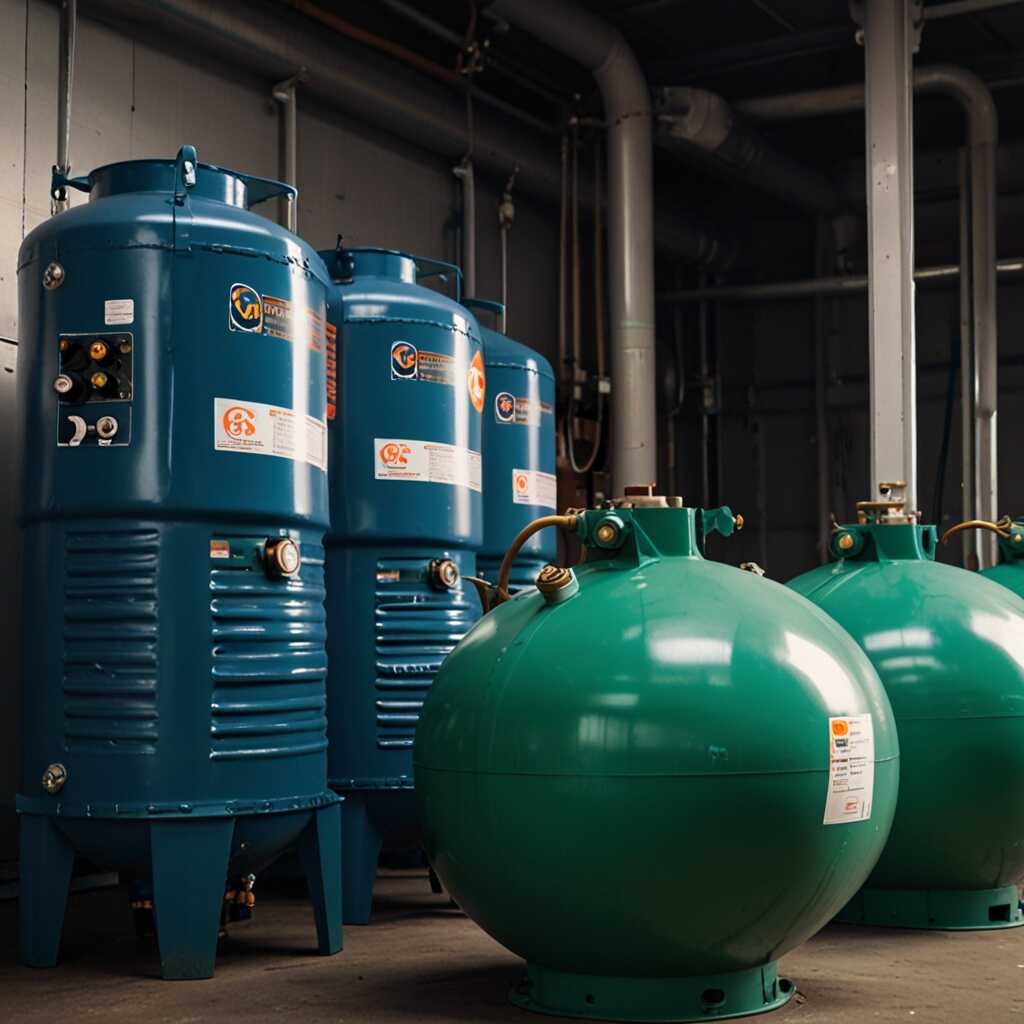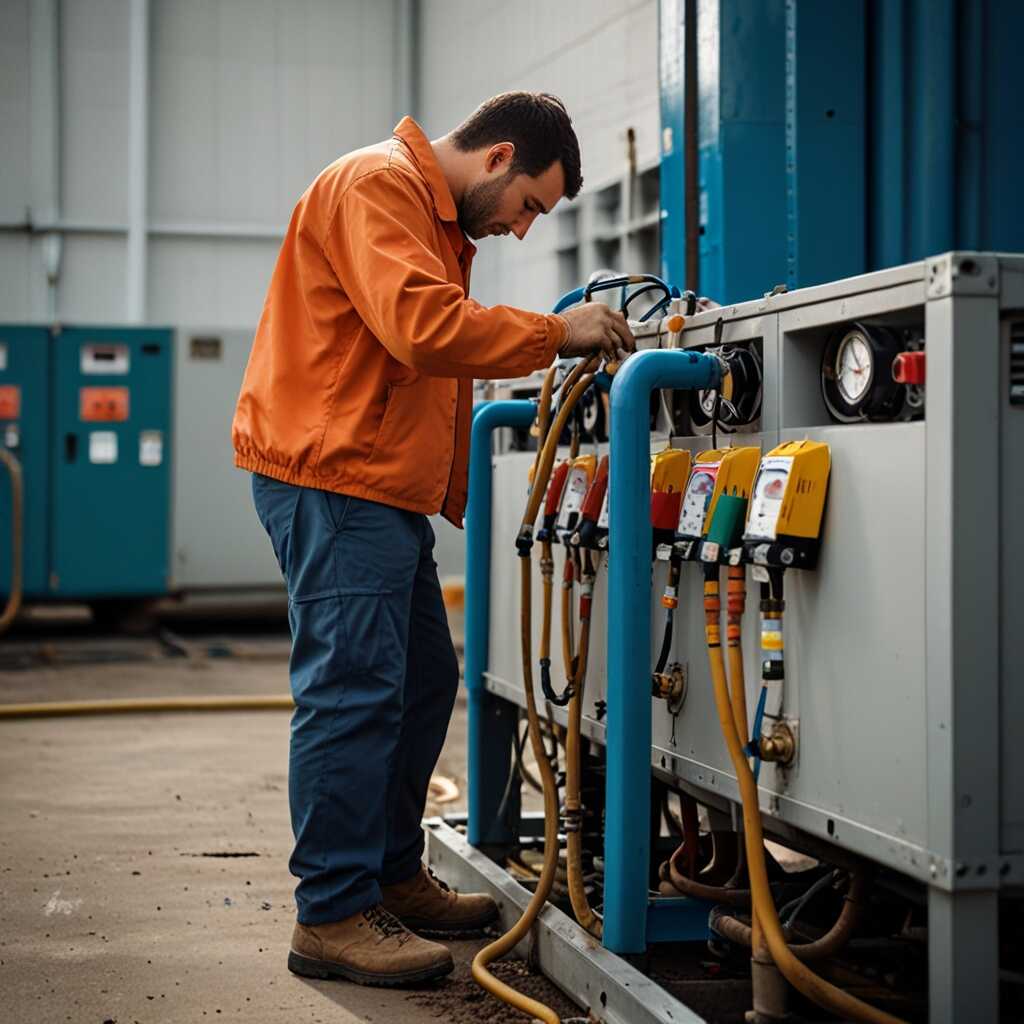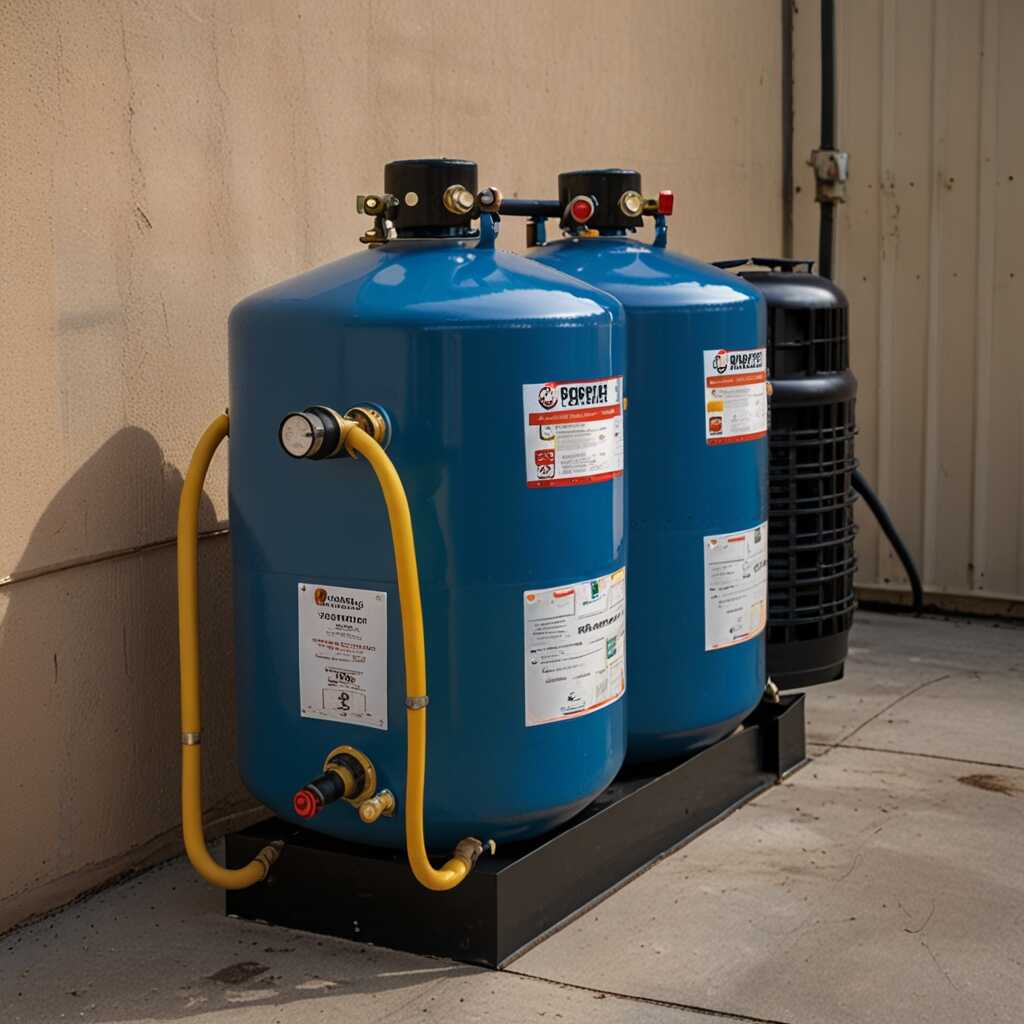Multi-point grounding in refrigerant recovery machines significantly minimizes static buildup, enhancing safety during operations. Static electricity can cause dangerous sparks, especially in environments with flammable substances like refrigerants. Refrigerant Recovery Pro emphasizes the importance of effective grounding techniques to reduce these hazards, ensuring HVAC professionals operate securely while following best practices. Understanding the mechanics of multi-point grounding is essential for maintaining equipment efficiency and compliance in refrigerant management.
Defining Static Buildup in Refrigeration Systems
Static buildup in refrigeration systems refers to the accumulation of electrical charge that can pose safety risks during refrigerant recovery. It usually occurs due to various factors, such as the movement of non-conductive materials, which creates friction and leads to charge separation. Understanding static buildup is essential for HVAC professionals because it can significantly impact refrigerant recovery processes. Poor grounding can lead to inconsistent performance, equipment malfunctions, or even hazardous events. Common causes include the materials used in hoses and tools, environmental conditions, and the operation of equipment.
Minimizing Static Buildup with Grounding Techniques
Using proper electrical grounding methods greatly minimizes static buildup in refrigerant recovery machines. Multi-point grounding provides a reliable connection to the earth, allowing static charges to dissipate safely. This technique helps enhance equipment reliability and ensures that refrigerant recovery processes are efficient and safe. Grounded systems reduce the risk of electrical shocks and improve overall performance during operation. Studies have shown that properly grounded equipment has up to a 50% reduction in static-related issues, resulting in smoother operation and improved safety for HVAC technicians.
The Critical Role of Grounding in Refrigerant Recovery
Grounding is crucial in refrigerant recovery to ensure both safety and equipment performance. Proper grounding mitigates static electricity hazards that could lead to unintended discharges during operation. Multi-point grounding enhances reliability by providing multiple pathways for static electricity to be safely dissipated. This is especially important during procedures involving the transfer or storage of refrigerants. Inadequate grounding can lead to equipment malfunctions or even accidents. This makes understanding effective grounding methods essential for HVAC professionals.
Understanding Multi-Point Grounding Benefits
Multi-point grounding in refrigerant recovery machines offers significant advantages over traditional single-point grounding. This method distributes electrical charge more evenly across the system, effectively reducing the risk of static buildup. It is designed to handle the electrical demands of modern refrigerant recovery equipment, which often operates at higher capacities. By utilizing multiple grounding points, HVAC technicians can ensure optimal performance and enhance safety. Studies show that systems with multi-point grounding have reported fewer incidents related to static electricity, improving overall operational efficiency.

Key Advantages of Multi-Point Grounding Systems
Multi-point grounding systems offer several critical benefits for refrigerant recovery machines. They significantly improve safety by providing multiple paths for static electricity to dissipate. This reduces the risk of static sparks that can ignite flammable refrigerants, ensuring compliance with safety regulations. Additionally, these systems enhance recovery efficiency by minimizing static buildup, which can adversely affect performance. As highlighted in expert reviews, machines with this technology deliver reliable performance and durability, helping HVAC technicians conduct their work more safely and effectively.
Identifying the Essential Features of Multi-Point Grounding Systems
Multi-point grounding systems include essential features designed to enhance safety during refrigerant recovery. They typically consist of multiple grounding points connected to a common electrical ground. This multi-point configuration enables the system to distribute static charges across a wider area, reducing peak voltage risks. Studies show that systems with well-defined grounding pathways improve operational efficiency and reduce equipment wear. Proper construction and maintenance of these systems can significantly enhance their performance. Technicians should routinely test these features to ensure they are working as intended.
Numerical Insights on Static Control Measures
- Multi-point grounding typically includes 5 to 7 grounding points.
- Static buildup can increase by 30% in poorly grounded environments.
- A well-grounded system can reduce static discharge risks to less than 5%.
- Up to 20% more refrigerant recovery efficiency is noted with better grounding.
- Compliance with regulatory standards requires grounding every 6 feet of hose.
- Training for technicians sees a 25% improvement in safety practices with grounding knowledge.
- Approximately 90% of accidental discharges occur in non-grounded setups.

Step-by-Step Instructions for Installing Multi-Point Grounding
Installing multi-point grounding in refrigerant recovery machines requires specific tools, such as a grounding rod, copper wiring, and a multimeter for testing. HVAC professionals should follow essential safety standards, including those set by the Environmental Protection Agency (EPA) and Occupational Safety and Health Administration (OSHA). When implementing multi-point grounding, typically, a minimum of three grounding points is recommended to ensure optimal safety and reliability in eliminating static buildup.
Tools Needed for Effective Grounding Installation
For effective multi-point grounding installation, you need tools that ensure a solid connection and safety. A grounding rod, often made of copper, is essential to create a reliable ground. Copper wiring connects the grounding points to the refrigerant recovery machine. A multimeter is necessary for testing the integrity of your connections. Using crimping tools and electrical tape securely fastens connections and prevents wear. Ensure all tools meet industry standards for durability, enhancing the overall performance and safety of your system.

How to Choose Quality Refrigerant Recovery Machines
When selecting refrigerant recovery machines, prioritize models with proven reliability and performance. Look for features such as multi-point grounding, which significantly reduces static buildup. Check product specifications and certifications like AHRI or UL to ensure compliance with industry standards. Reviews from experienced HVAC professionals provide valuable insights into real-world performance. Quality refrigerant recovery equipment typically falls within a cost range of $1,500 to $4,500. This range reflects factors like durability, efficiency, and essential features.
Understanding Multi-Point Grounding in Refrigerant Recovery Machines
Multi-point grounding in refrigerant recovery machines is crucial for enhancing safety and performance. This feature ensures that static electricity is effectively dissipated, minimizing the risk of electric shock and equipment damage. Reliable performance is often linked to rigorous testing for static control. When comparing models, consider those that have undergone comprehensive testing and have certifications that confirm their grounding capabilities. Selecting machines with superior grounding helps improve operational efficiency, enabling HVAC technicians to work more comfortably and safely.
Advantages of Enhanced Grounding Techniques
- Improved safety reduces the risk of accidents for HVAC professionals.
- Multi-point grounding is proven to decrease static buildup during refrigeration recovery.
- Increased reliability prolongs the lifespan of recovery equipment.
- Enhanced team confidence leads to more efficient operational practices.
- Lower maintenance costs arise from fewer repairs on static-sensitive equipment.
- It ensures compliance with industry regulations, promoting sustainable practices.
- Streamlined recovery processes save time and enhance productivity.

Adopting Best Practices for Safe Refrigerant Recovery
HVAC technicians should always verify the proper functioning of the refrigerant recovery equipment before usage. Technicians must regularly inspect grounding features to ensure they are working effectively. This enhances safety and reliability during refrigerant recovery tasks. Understanding the essential components of the grounding systems is crucial. Technicians should ensure that proper connections are in place. Ideally, a reliable refrigerant recovery machine should have at least two grounding points. This ensures consistent static electricity dissipation, enhancing safety while improving operational efficiency.
Understanding Grounding Systems in Refrigerant Recovery Machines
Grounding systems are critical for preventing static buildup in refrigerant recovery machines. They are designed with dedicated grounding points that help in safely redirecting electrical energy. An effective grounding system includes high-quality grounding wires, reliable grounding terminals, and effective bonding to the recovery system. These components create a durable and efficient setup that reduces risks during refrigerant management. Regular testing of grounding systems is essential for ensuring long-term performance. Maintaining these systems can help HVAC technicians achieve seamless operation throughout their recovery processes.
Addressing Common Static Electricity Challenges
Static electricity in refrigerant recovery operations can cause significant safety and performance issues. Common problems include unexpected sparks, equipment malfunction, and potential harm to technicians. High humidity, dry environments, and certain materials used in equipment can amplify these challenges. Technicians should regularly test grounding systems and review equipment design features that minimize static buildup. The refrigerant recovery process can benefit from troubleshooting methods such as regular inspections and adherence to safety precautions. Professionals must understand how to maintain equipment and properly handle refrigerants to ensure safety and efficiency.
Best Practices for Reducing Static Electricity
Employing best practices for reducing static electricity is crucial in the refrigerant recovery process. Technicians should use grounding techniques specifically designed for their equipment. Regularly testing grounding systems can help spot weaknesses or failures. Utilizing anti-static mats and ensuring proper footwear also enhances safety. It is essential to understand that environmental conditions affect static behavior. By maintaining adequate humidity levels, technicians can mitigate static electricity risks. Furthermore, choosing equipment with integrated design features for grounding can significantly improve performance and reliability.
Prominent Brands and Their User Focus in Grounding Solutions
- Brand A excels in user-friendly equipment but may lack advanced grounding features.
- Brand B provides superior grounding technology specifically for commercial settings.
- Brand C offers budget-friendly solutions but often sacrifices static control quality.
- Demographics include HVAC contractors seeking safer recovery systems for larger sites.
- Technicians operating in labs tend to prefer brands with comprehensive grounding solutions.
- Energy companies often look for reliable, compliant equipment to meet regulatory demands.
- Home service providers appreciate versatile equipment that performs well across various environments.
Exploring Future Trends in Refrigerant Recovery Technology
Latest innovations in refrigerant recovery technology focus on advanced grounding methods that minimize static build-up. Companies like Refrigerant Recovery Pro and others are actively researching and developing systems that enhance grounding techniques. These advancements are essential for improving the overall reliability and efficiency of refrigerant recovery machines. The projected timeline for the widespread adoption of these technologies is around 2025, allowing HVAC professionals to benefit from improved performance and safety in their equipment.
Key Innovations in Grounding Methods for Refrigerant Recovery
Key innovations in grounding methods involve improvements in materials and designs that enhance safety and reliability. Research emphasizes multi-point grounding systems that distribute static charges evenly, reducing build-up during refrigerant transfer. Manufacturers are testing new frameworks that incorporate conductive materials proven to minimize static electricity. This research includes robust data on the performance of these systems under various environmental conditions. By 2025, HVAC technicians can expect these advancements to deliver significant improvements in the efficiency of refrigerant recovery operations.